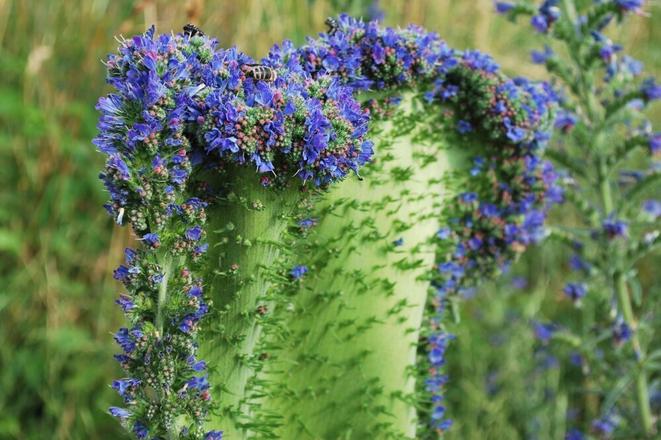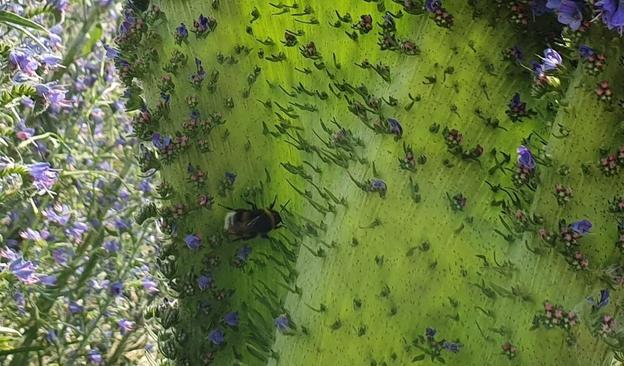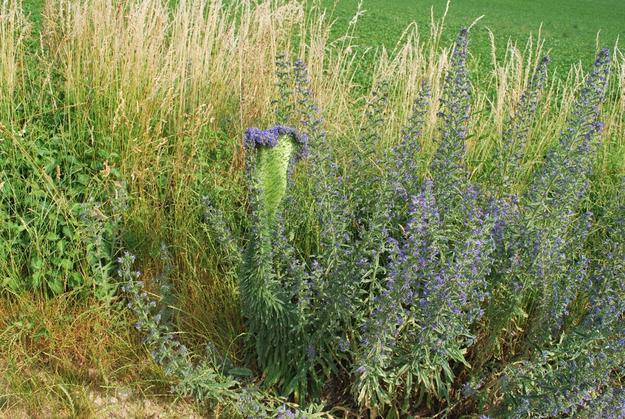During a usual walk along a field, a plant whose unusually huge stem was 26 centimetres wide at the top caught the eyes of a group of tourists in the Trenčín Region.
Fascinated by the mysterious plant and unable to identify it, they turned to botanists for help in finding out its name. In addition to confirming that their find was an extraordinary phenomenon, botanists told them the plant’s name was viper’s bugloss – a hairy species with dense spikes of blue flowers that can grow up to 80 centimetres.Fascinated by the mysterious plant and unable to identify it, they turned to botanists for help in finding out its name. In addition to confirming that their find was an extraordinary phenomenon, botanists told them the plant’s name was viper’s bugloss – a hairy species with dense spikes of blue flowers that can grow up to 80 centimetres.
“It is a very nice and interesting find,” botanist Pavol Mereďa told the My Trenčín website.

In the old times, the wildflower was used as a treatment for snake or viper bites. However, research has not confirmed that the plant could be of help in this case. It does contain disinfectants, though.
Viscosity
The discovered abnormality is a result of the plant’s viscosity, meaning an organ or a group of organs gets thicker instead of growing upwards. In most cases, that organ is the stem. There are several causes of this, according to the expert.
“These may be hormonal disorders at the site of growth or genetic mutations occurring accidentally or because of external factors like chemicals, for example,” Mereďa said.
Viscosity can also be caused by bacterial, fungal, or viral diseases.
Regardless of its shape, viper’s bugloss provides food for a range of insects, including bumblebees, honeybees, bees and butterflies.
Strange plant mutations
While tourists were overwhelmed by the unusual shape of the species, botanists have seen plants like it before.
“A similar case was recorded in the southern part of the Small Carpathians,” said Mereďa.
Botanist Michaela Galová told My Trenčín that the viscosity of the plant near Nové Mesto nad Váhom, Trenčín Region, might have been caused by pesticides from a nearby field, which was the case of the viper’s bugloss discovered in the town of Modra, near Bratislava.
“Unregulated tissue growth leads to a significant increase in plant weight and volume,” she added.
Plants can end up looking like magic brooms because of viscosity, according to Galová. In other cases of strange plant mutations, viscosity can lead to a plant looking like a large ram’s horn or a grotesque tangle of coils.
Botanical dictionary
Two pictures of the mutated plant found by tourists during the summer have already been added to an online botanical dictionary.
The dictionary, launched in 2006 by botanists, contains 4,979 terms from cytology, morphology, and general botany, which are supplemented with 689 pictures.


 The stem of the mutated viper's bugloss is 26 centimetres in width. (source: Martin Šimovec)
The stem of the mutated viper's bugloss is 26 centimetres in width. (source: Martin Šimovec)
 Viper's bugloss provides food for a range of insects. (source: Martin Šimovec)
Viper's bugloss provides food for a range of insects. (source: Martin Šimovec)
 Tourists found the mutated plant by a field in the Trenčín Region in the early summer. (source: Martin Šimovec)
Tourists found the mutated plant by a field in the Trenčín Region in the early summer. (source: Martin Šimovec)